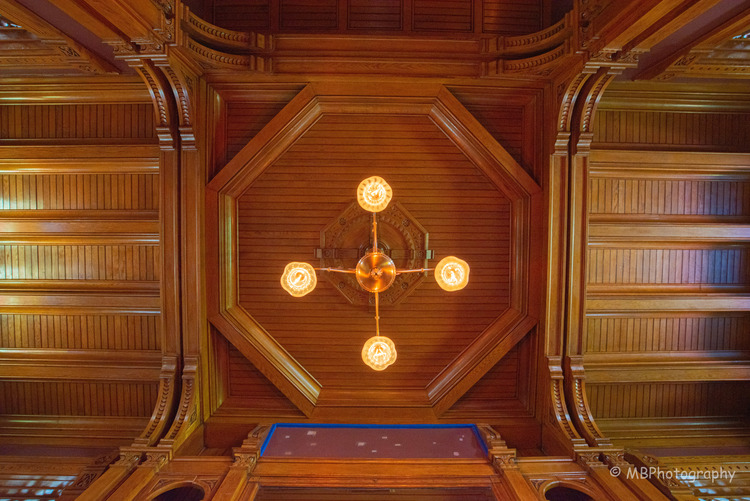


Grand Hall - Rogers and Electricity
Electricity was initially so expensive because Henry Rogers had purchased the equipment to light all of Appleton, yet the cost had to be initially spread over a very small number of users: Just Henry Rogers and his three business partners.
This created a two-fold business problem for Henry.
First, electricity was not going to get cheaper until Henry and his partners could spread the cost out over middle-class households. Yet, middle-class households could not afford it until it became cheaper.
Second, electricity was only being used for lighting. There were no motors yet or other ways to use electricity during the day and the river was of course capable of making electricity twentyfour seven.
Unsurprisingly, Henry's first two electric companies go bankrupt. After reincorporating a third time, the solution to both problems was found in 1886 when another new technology saves the day. Charles Van Depoele had just invented the first electric motor and overhead pole system to replace horses and create the first successful electric trolley. Henry and his partners realized that they could now sell electricity during the day for a nickel-a-ride. Using the newly invented system, they started the first successful commerical electric trolley line in the country which ran until 1930.
Three final notes:
First, the complementary nature of electric lighting and trolleys is why many early urban electric companies were called "Light and Traction" companies. The traction portion is the trolley line.
Second, the bricks in Hearthstone’s walkways today were originally used to line the city’s trolley tracks. They are Purington Pavers manufactured in 1890.
Third, the final company that Henry created continues on to this day as one of the progenitors of Wisconsin Electric. The utility still generates hydroelectricity along the Fox River in Appleton.